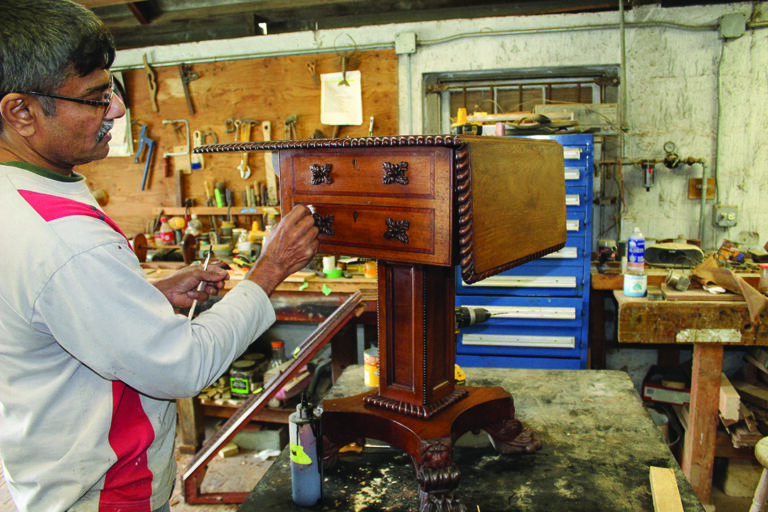Furniture can be difficult to part with, particularly if it holds any sentimental value.
If you have a piece that you think might be worth fixing and keeping, there are some things to consider.
The experts in furniture restoration at BS&R Group can help you decide whether a piece is worth putting in the money.
“We can rebuild even the most dilapidated thing, but you have to ask yourself when does the bank account dry up,” said Anthony Madeiros, the managing director of the family-owned and operated stripping and refinishing business.
While Mr Madeiros doesn’t ever wish to tell someone their possessions are “trash”, he does prefer to be transparent about how much work it would take to give an item new life.
“I’m here to give them value for a piece,” he said.
Providing quotes and an initial conversation about what might be involved in restoring a certain piece will cost nothing, and is the best place to start, Mr Madeiros suggested.
But he also says there are a few key things to look for that make a piece almost always worth restoring, such as cedar.
“Any cedar furniture of any decent aesthetic is probably worth it no matter what the condition,” he said. “It’s worth restoring and keeping it in the family and giving it a new lease on life. It’s a national treasure, and you owe to your heritage if anything.”
Once you’ve distinguished the type of wood, then it is worth looking at the budget to see if it is worth keeping.
He also recommends exploring possible restoration further if the item is made of oak or mahogany.
“These pieces are often very well built,” Mr Madeiros said.
Anything with plywood or poorly held together with nails going through the wood won’t hold much historical value, he adds.
While almost anything can be restored, people do have to be realistic about what goes into the restoration process, particularly if something is very old or in poor condition.
“Pricing is a bit of a moving target in these situations, and we might not always be able to fit the entire scope into an estimate,” said Mr Madeiros. “If it’s getting crazy we’ll discuss further with the client.”
Traditional restoration projects are not just about “using some Gorilla Glue and putting a screw in it”.
These are long-held techniques using traditional adhesives and specific tools, he said, and “you have to give the value back to the piece and keep to a certain discipline”.
With some creative thinking, some older pieces can also become a more aesthetically pleasing item that can fit into a modern lifestyle.
Mr Madeiros has worked on pieces that have been transformed with different stains, white washes and paints.
“We can take an item and modernise it; repurposing it from a period restoration to a modern piece,” he said.
It can give something a completely different look without going crazy over budget, he added. In many cases, a new coat of paint or faux finish can hide problem areas on an older piece cutting down on costs.
And compared with what you can buy brand new these days, restoring a piece of well-made furniture can prove valuable in the future and become an antique of tomorrow.

